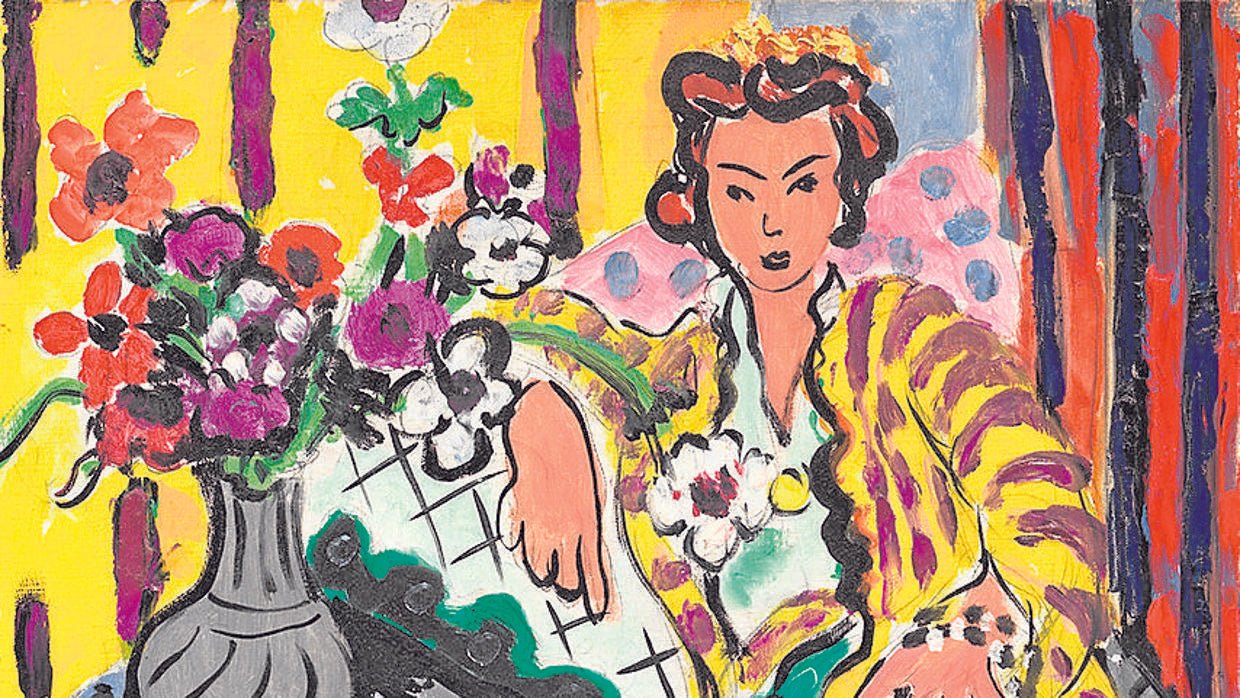Considered one of the most important painters of the 20th century, Henri Émile Benoît Matisse - commonly known as Henri Matisse - was born on December 31, 1869 in the former region of Picardy, France.
His themes were mostly domestic or figurative, and had a distinctively Mediterranean treatment, a characteristic that gave him the role of leader of the Fauve movement in 1900 , and throughout his career he pursued the expressiveness of color.
Matisse Berggruen & CIE Poster - Henri Matisse
Although his family worked in the grain trade, Matisse took another path and worked as a legal assistant to later study a degree in Law in Paris, from 1887 to 1889. It was during his period working in a law office that he began to take drawing classes.
However, it would not be until he turned 21 that Matisse would find his true taste for painting, after beginning to paint while recovering from an illness that made it impossible for him to leave his home. It was then that his vocation as an artist was consolidated.
In 1891, Matisse moved to Paris to begin his artistic studies. At that time, he took lessons from renowned artists of the time, at schools such as the Académie Julian and the School of Fine Arts (École des Beaux-Arts) in Paris, where he learned according to the traditional academic method, which required copying the work of the “old masters”. However, Matisse also acquired knowledge of Post-Impressionist works by Paul Cézanne and Vincent Van Gogh while living in Paris.
The Dessert (1908) - Henri Matisse
His first exhibitions were held in various exhibitions in Paris, which brought together a large group of emerging artists. He even appeared at the traditional Salon of the Société Nationale des Beaux-Arts , where his work received favorable comments.
As the 20th century arrived, Matisse was influenced by the work of Georges Seurat and Paul Signac , who often painted using the “pointillism” style. For this reason, he stopped showing his works in the traditional Salon des Beaux-Arts, and began to present his works at the Salon des Indépendants , since 1901, a space that was considered more progressive for the time.
By 1904 Matisse was already showing great advances in his art. A visit to Saint-Tropez , in the south of France, inspired him to begin painting brightly and luminously as he did in “Luxury, Calm and Voluptuousness” (1904), and after his time at the Villa de Collioure in the Mediterranean, was inspired to create one of his most notable works “Woman with a Hat” ( 1905). It was thanks to the presentation of these pieces that people began to talk about a new style of painting, “Fauvism”.

Woman with a Hat (1905) - Henri Matisse
When painting in this style, Matisse empathized with the emotional power of curved lines, strong brushstrokes, and bright colors, as seen in works such as “ The Joy of Living” (1905) , a large composition of female nudes posing in a landscape. Like much of his more mature work, this scene captured a mood beyond just trying to represent the world more realistically.
After finding his own style, Matisse enjoyed a period of great success. He bought a large studio in Paris and signed a contract with the Galerie Bernheim-Jeune . His works were purchased by important collectors such as Gertrude Stein in Paris and Sergei I. Shchukin , a prominent businessman, who also commissioned two of Matisse's most important works, The Dance I (1910). and The Music (1910) .
The Dance (1910) - Henri Matisse
From 1910 onwards, Matisse continued to work with techniques of saturated colors, limited details and strong contours, resulting in works that delighted those who viewed them. Some works, such as Piano Lesson (1916), explored the structures of Cubism , the movement pioneered by his direct rival, Pablo Picasso . However, his themes were always more traditional: scenes from his own studio, portraits of friends and family, paintings of figures in a room or in natural landscapes.
In 1941, due to surgery, Matisse was bedridden for a long time but continued working from his studio. He even painted with a pencil or charcoal tied to a stick, which allowed him to reach the canvas on which he worked, this helped make his latest works as experimental and vibrant as those of his artistic beginnings.
Matisse Poster Aix en Provence (1960) - Henri Matisse
One of his last great works was to create a decoration program for the Rosary Chapel in Vence (1948), a city near Nice, where he designed stained glass windows, murals, furniture and even sacred vestments for the priests of the church.
Henri Matisse died on November 3, 1954, at the age of 84 and to this day is recognized as one of the most innovative and influential artists of the 20th century.
Find the Henri Matisse collection in Pasquín version, through our website, www.tiendapasquin.cl.





